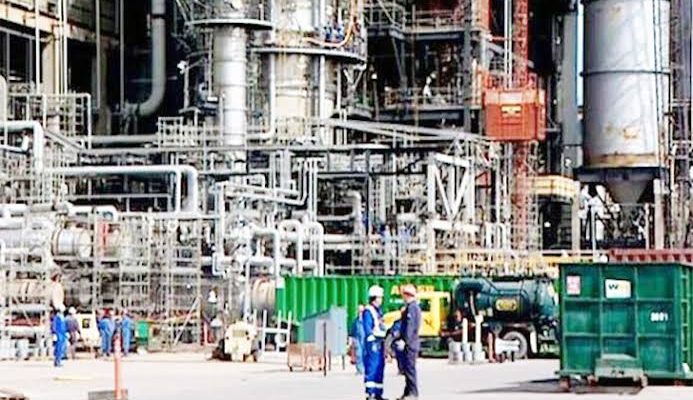Dangote’s 650,000 barrels-per-day (bpd) oil refinery project has been identified as one of the oil distillation companies that would boost global refining capacity by 6.9 million barrels per day in the next five years.
The Organisation of the Petroleum Exporting Countries (OPEC), disclosed this in its 2021 World Oil Outlook released recently.
OPEC said Africa’s medium-term outlook appears more optimistic with 1.2 million barrels-per-day (mb/d) of new capacity expected by 2026, saying half of which is to be accounted for by the 650,000 bpd Dangote Oil Refinery project in Nigeria, which is likely to come on stream in 2022.
The oil cartel identified these projects, which are located mostly in Nigeria, Angola and Ghana, to include a number of pre-fabricated modular facilities.
“Once commissioned, these projects will help to reduce product imports to Nigeria and West Africa and will, in turn, increase the use of local crude. In North Africa, refinery capacity expansions are likely in Algeria and Egypt,” it said.
Similar to previous outlooks, OPEC said refinery additions are concentrated in developing regions, such as the Asia-Pacific, the Middle East and Africa, adding that the total medium-term capacity additions of 6.9 mb/d are composed of projects in different development stages.
“Around 3.5 mb/d of capacity is under construction or close to this stage; hence, these are the projects with the highest certainty to materialize in the medium-term.
“There are also projects totalling 3.4 mb/d that are mostly in early stages of development, but still advanced enough in terms of financing and engineering to be considered ‘firm’ medium-term additions,” the global organisation stated.
These regions, it noted, account for almost 90% of the additions in the period 2021–2026.
“The medium-term outlook contains several large projects, many of which have petrochemical integration as well. These developments are in line with expected oil demand growth,” it added.
Speaking on investments in refinery projects, OPEC puts the total global estimated required investments at $1.5 trillion in the 2021-2045 period.
It noted that these include investments of nearly $450 billion in new refinery projects and expansions of existing units located mostly in developing countries, including those in the Middle East, Asia-Pacific, Africa and Latin America. OPEC stated.
“Required investments in the midstream sector are estimated at around $1.1 billion in the same time horizon and are attributed to the expansion of the infrastructure for refining, storage and pipeline systems, predominantly in developing regions, but also in large oil exporting regions (e.g. the US & Canada and the Russia & Caspian).
Thus, globally, oil-related investment needs in the long-term are estimated at $11.8 trillion. “Long-term (2021–2045) capacity additions are expected at 14 mb/d, mostly in developing countries.
However, the Reference Case projects a significant slowdown in the rate of additions. Africa and Other Asia-Pacific are the regions where significant incremental capacities are expected, even after 2030.
The report said, “The continent of Africa is home to an abundance of energy resources, including about 10 per cent of the world’s oil reserves; however, it still has difficulty in harnessing these precious resources to meet its energy demand.
“This, in turn, hinders efforts to provide affordable and reliable energy required for economic growth and development. Africa has yet to unlock its huge potential in the energy sector, although its ever-increasing population growth and economic prospects require more energy.
“This drawback is mostly due to regional uncertainties, as well as government policies and regulatory frameworks guiding the energy sector, and more recently, the efficiencies required to reduce CO2 emissions in exploration and production activities”.








